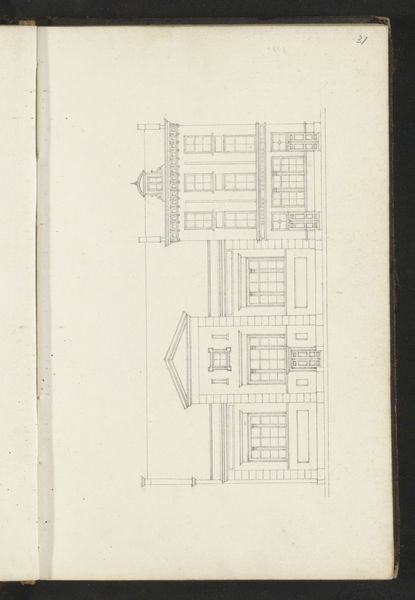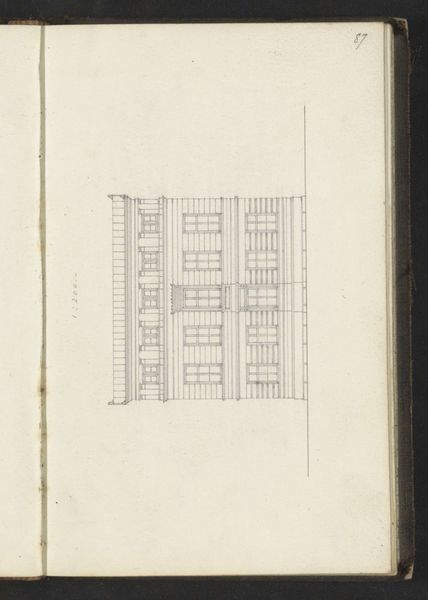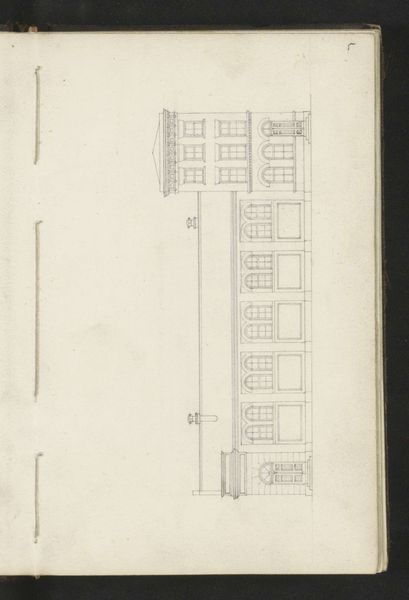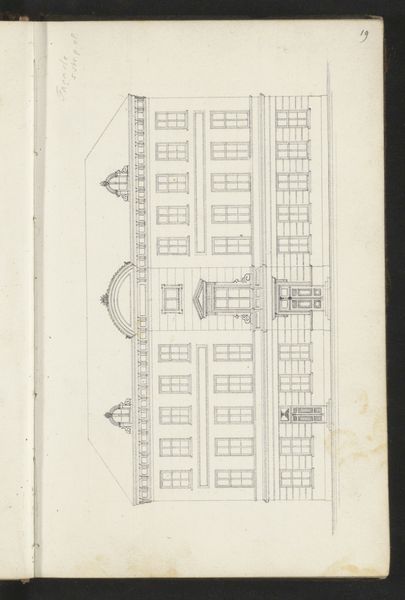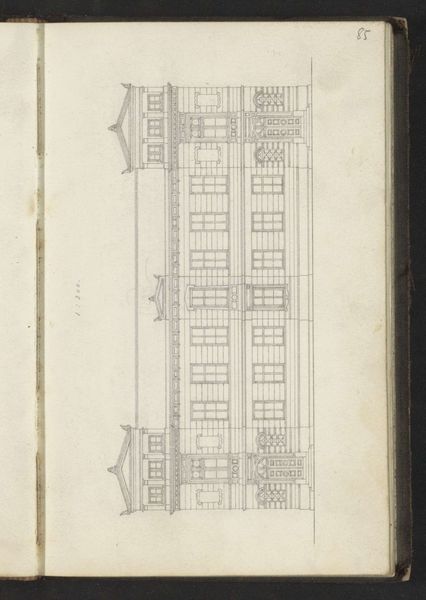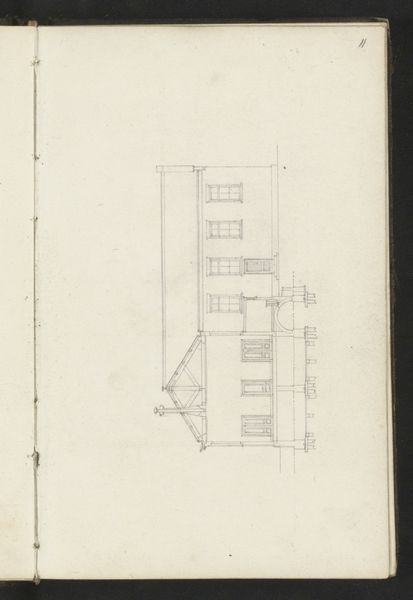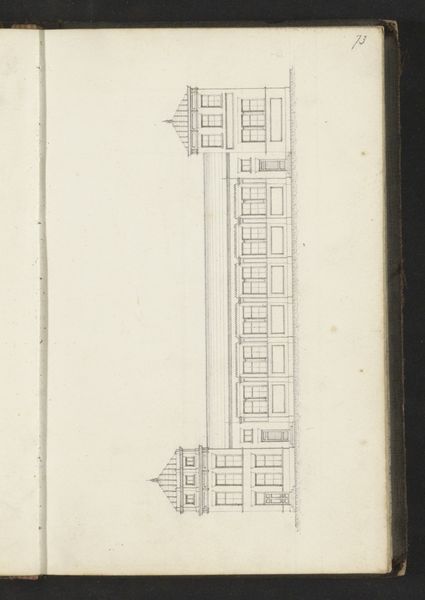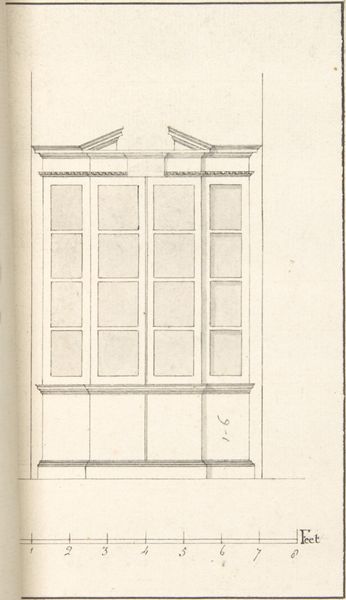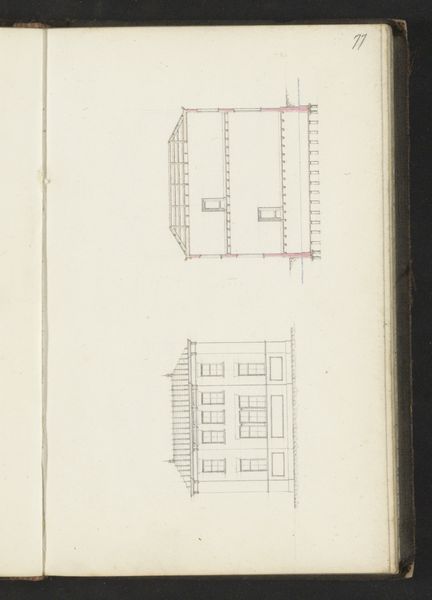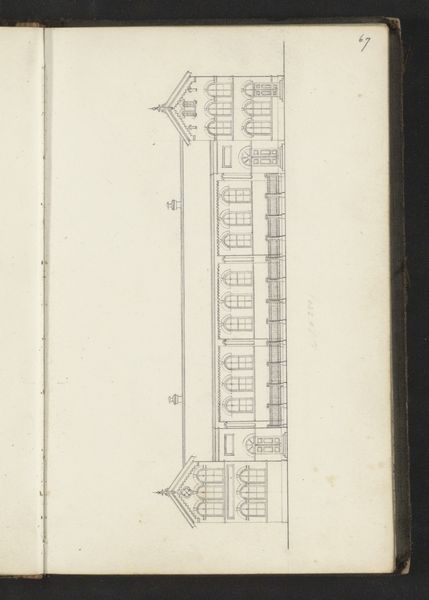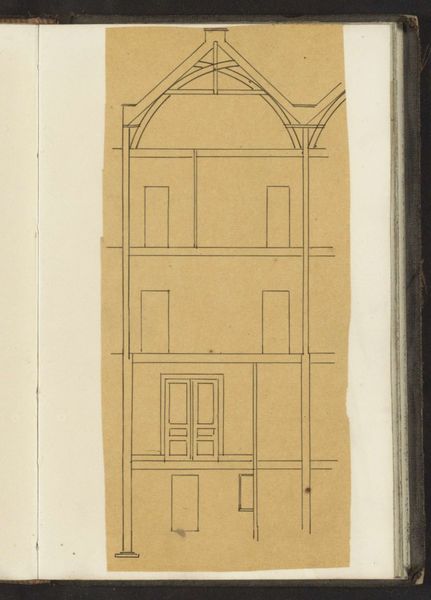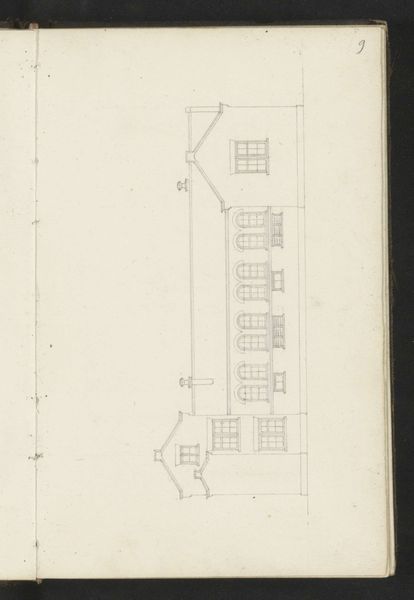
drawing, paper, ink
#
drawing
#
paper
#
ink
#
line
#
cityscape
#
realism
#
building
Copyright: Rijks Museum: Open Domain
Curator: This compelling drawing, "Opstand van de façade van een gebouw" (Elevation of the Façade of a Building), was created around 1864 by Willem Springer Jr., using ink on paper. What is your initial reaction? Editor: It feels very formal, restrained even. The meticulous lines outlining the building facade convey a sense of order and precision, though a bit sterile, lacking vitality perhaps. Curator: Springer's era in the Netherlands witnessed growing industrialization and urbanization, fundamentally altering existing power structures, especially those governing space and development. The façade takes on new meaning. Editor: I see that. It’s a statement, not just of architecture, but of aspiration and order. Notice how the rectangular and arched windows symbolize stability and faith? It's very much rooted in Renaissance architectural symbolism, even for a later date. Curator: Precisely. Urban planning and the architectural designs of buildings reflected new social hierarchies and bourgeois values. Think of the rise of urban centers, reshaping social interactions along new, often unequal, lines. Architectural drawings such as this offer an intimate perspective on those developments. Editor: The emphasis on verticality draws the eye upwards, almost to the point of sanctification. Could the arches above represent triumph? I also feel there is an almost religious repetition in the regular windows on the left-hand side that seem more for light than sight. Curator: You are quite right. Springer offers not merely an architectural record but rather contributes to defining and stabilizing bourgeois power in 19th-century Netherlands through visual representation. His line art is not as objective as some may consider at first glance. Editor: Seeing the facade as more than just architecture helps me to recognize the historical era from another perspective. I still see it as visually a bit restrained, but in retrospect this has many complex elements. Curator: It is interesting how viewing this work through different perspectives creates a nuanced dialogue on urban design and representation, bridging past aspirations and present understanding of cities and the power that they represent.
Comments
No comments
Be the first to comment and join the conversation on the ultimate creative platform.
